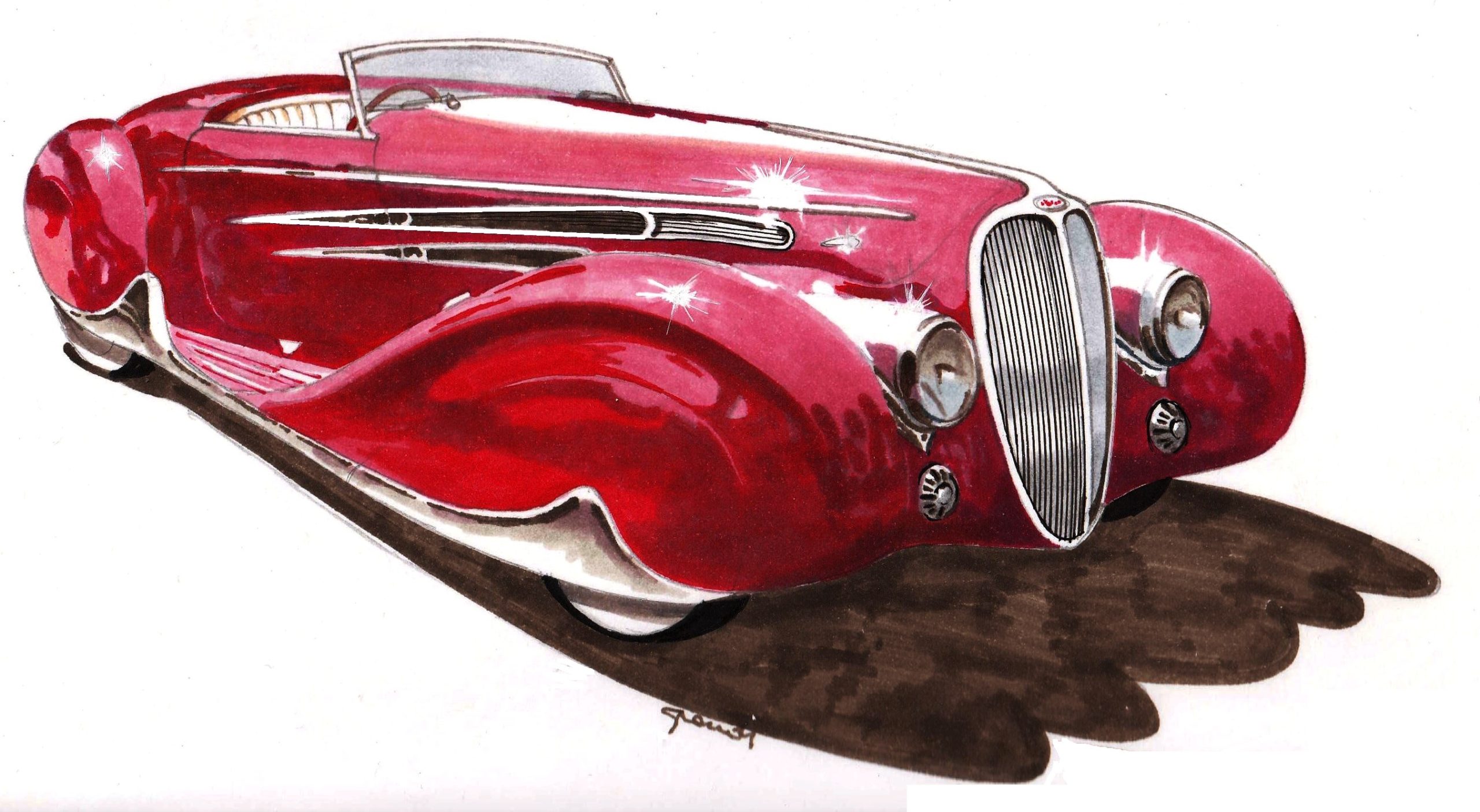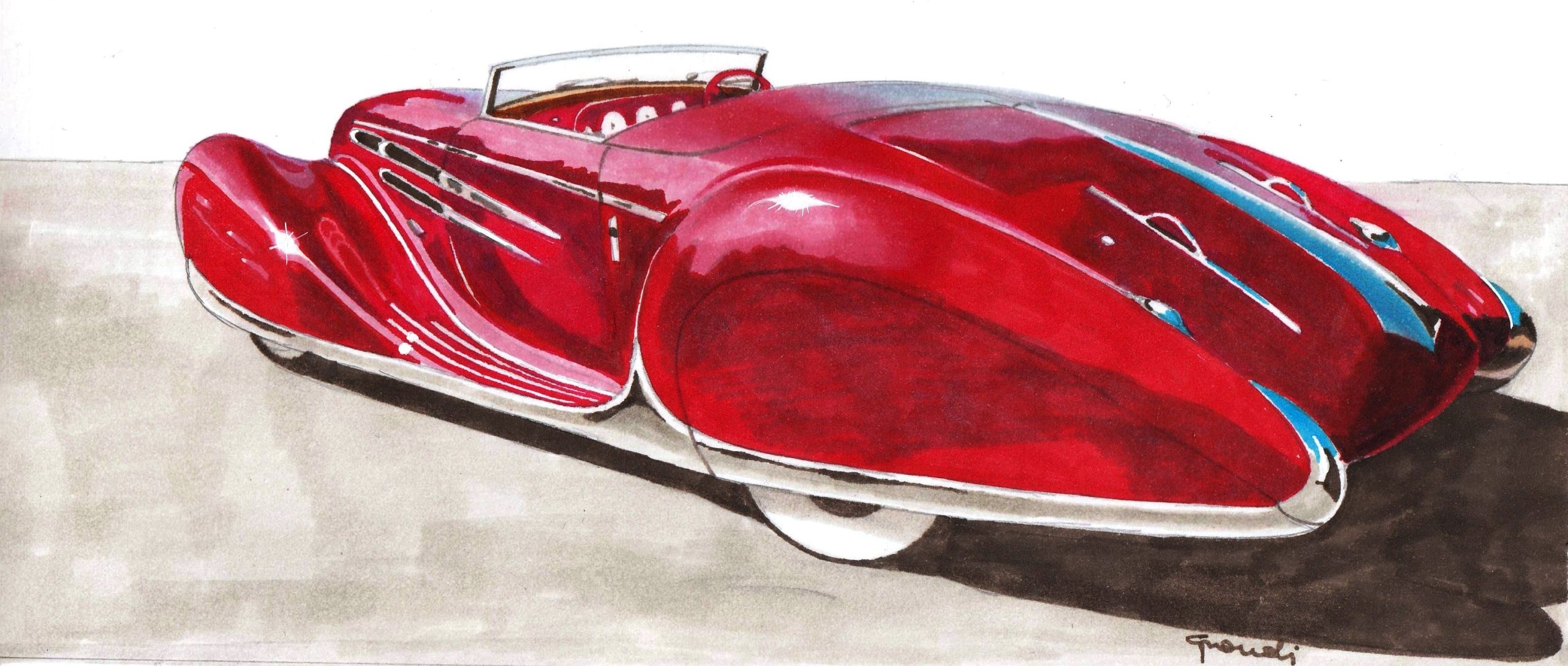So much more. Maybe too much
A deeper look into those wonderful years of the opulent French curves. With the valuable support, depth of knowledge and illustrative talent of Prof. Massimo Grandi
Photo credit: Some images are taken from the book Asi Service "Quando le disegnava il vento" by Massimo Grandi
Our occasional forays into the history of aerodynamics have taught us that scientifically-studied aerodynamic cars weren’t always well received by the public and manufacturers: they were too different, too weird, with functional rather than aesthetic quirks. Pre-war Paris, however, was wholeheartedly seduced by new aerodynamic forms. Simple shapes that went on to be called French curves and did nothing to improve consumption or performance.

There are many cars that belong to this train of thought but the Delahaye 165 M is certainly the most symbolic example. Built on the same chassis used for the company’s racing competition models and sharing the same a 170 horsepower, V12 engine, the famous coachbuilders from the 1930’s, Figoni and Falaschi, Italians by origin but who set up a permanent base in France, interpreted this model in the most “spectacular” way possible: the soft and rounded shapes with the bodywork protruding from the wheels, hiding them, uses chrome in the most unusual manner to emphasize what is a truly unique design.

This model was a roadster and also featured a windshield that could be retracted by using a crank handle under the dash until it fully disappeared down into the cowl. Luxury touches weren’t only limited to the exterior: opulent white leather seats and rich instrumentation completed this superlative creation.

Next week we will visit another example of this flamboyant ostentation, but it should not come as a surprise to learn that after the war, the public’s taste for this kind of style diminished so much it was almost entirely forgotten. Cars were destined for mass production and even the simply magnificent F&F Carrozzeria went through a painful decline.
